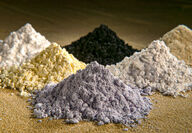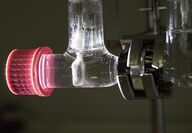Sorted by date Results 1 - 7 of 7

Researchers from the Birmingham Energy Institute, along with several partners, are supporting a new grant-funded project to recycle rare earth magnets from electronic waste, electric motors, and wind turbines for the United Kingdom's critical minerals supply chain. Secure Critical Rare Earth Magnets for UK, or SCREAM, is a 3.4-million-pound (US$4.1 million) UK Research and Innovation funded project that will establish a recycled source of rare earth magnets in the UK to...

It seems that cutting-edge computer technology, like truth, is stranger than fiction. In this strange new world of computational science, diamonds push past the reasonable and into the incomprehensible realm of quantum computing. Such a diamond-based quantum computer developed by German-Australian startup Quantum Brilliance can run at room temperature, allowing it to work in tandem with conventional supercomputers at the Pawsey Supercomputing Research Centre in Australia....

A small, made-in-British-Columbia device that uses sensors typically found in breweries and greenhouses has proven to be useful in the exploration of critical minerals. A new report from Geoscience BC shows that this device can indicate the presence of geological faults and sulfide mineralization through real-time measurements of the concentrations of oxygen and carbon dioxide in soil. This ability to sniff out CO2 in the soil can help geologists identify potential mineral...

Global mining and metals company Rio Tinto has entered into a strategic partnership that includes a roughly US$10 million (C$12.5 million) investment in Nano One Materials Corp., a British Columbia-based company that has developed a technology equivalent to the "Instant Pot" of lithium battery cathode materials. While there has been a lot of buzz about the hundreds of factories being constructed around the globe to manufacture the lithium batteries needed for the electric...

The rare earth magnets that help wind turbines transform a breeze into low-carbon electricity and then convert that energy to horsepower in the motors of electric vehicles will soon be made in Oklahoma. On June 9, USA Rare Earth LLC announced it bought a 309,0000-square-foot building in Stillwater, an Oklahoma city that boasts a growing high-tech economy, to house its rare earth elements processing and magnets plant. "Oklahoma has long been on the cutting edge of energy...

The United States Department of Defense is investing US$120 million to fund a heavy rare earths separation facility to be owned and operated by Lynas USA LLC, a subsidiary of Australia-based Lynas Rare Earths Ltd. This facility is to be built alongside a light rare earths separation facility that is being co-funded by the Pentagon and Lynas. "The U.S. Government's selection of Lynas for this strategic contract reflects our proven track record in Rare Earths production," said...

Researchers at the University of Cambridge, with academics at Imperial College London, have developed a bismuth leaf that may one day be able to produce clean hydrogen from water and sunlight, overcoming some of the basic challenges of producing this emerging green energy fuel. Hydrogen fuel is expected to play a critical role in the transition to decarbonization and in reaching many countries' goals of net-zero emissions. With most hydrogen currently supplied from fossil...